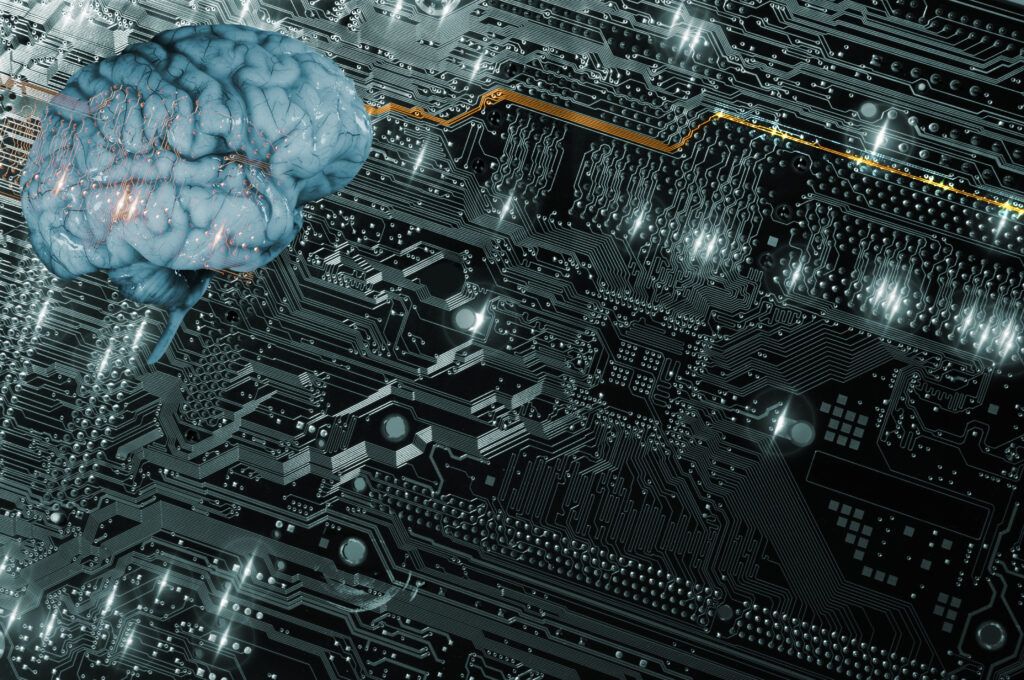- Home
- Blog
- Content Marketing How to Detect AI Content in 2024
How to Detect AI Content in 2024
-
 Published: May 19, 2023
Published: May 19, 2023
-
 13 min. read
13 min. read
-
 Sina Mchunu
Sina Mchunu Research & Tech Content Writer
Research & Tech Content Writer
- Sina is a marketing expert who specializes in SEO, AI, and digital marketing content. With over five years of experience, she’s written hundreds of pieces, spanning a variety of topics and industry niches. She loves combining her strong eye for detail and passion for storytelling in her work. You’ll find her fruit picking or horse riding at the local farm when she’s not writing.
Artificial intelligence (AI) detection involves the examination of media files (such as text, images, and videos) using AI algorithms to determine whether a human or an AI program created them.
We can’t deny that technology has revolutionized how we work, making our lives more convenient and efficient. With that being said, many developers worldwide have transformed content creation. They have developed various writing tools and software that help writers edit, proofread, and generate content. But is it getting out of hand?
Google seems to think so — a few months ago, search advocate John Mueller stated that AI-generated content is against Google’s webmaster guidelines and that websites using such content may face penalties. Which makes it a serious matter if you’re utilizing the search engine to post information, marketing, and advertorial content to reach target audiences.
So then, how do you detect AI content to avoid these penalties? We’ll take you through the steps of identifying AI-generated content using different methods, including analyzing the use of language, looking for patterns in the content, and using specialized software designed to detect AI-generated text.
Here’s a brief overview of the topics we’ll cover:
- What is AI detection?
- AI vs. human
- How to detect AI content [written text]
- How to detect AI-generated images
- Top AI detection tools
If you would like to dive deeper into how AI works, you can read the linked article!
Don’t miss our Marketing Manager Insider emails!
Join 200,000 smart marketers and get the month’s hottest marketing news and insights delivered straight to your inbox!
Enter your email below:
Inline Subscription Form – CTA 72
“*” indicates required fields
(Don’t worry, we’ll never share your information!)

What is AI detection?
AI detection is the practice of analyzing digital media for signs of plagiarism or duplication to determine whether or not a human or AI software produced it. It involves utilizing machine learning algorithms to compare various content elements — such as sentence structure, vocabulary, and writing style — to identify patterns or anomalies indicating the presence of AI-generated content.
AI vs. human
When we compare AI-generated material to human-created work, the key distinction is the source of inspiration. Human-produced content reflects the author’s uniqueness concerning their worldview, experiences, and emotions. On the other hand, AI-produced content is created by computers using data sets and algorithms already in existence to generate text that resembles human writing.
For instance, an AI-generated news article may provide accurate information, but it cannot capture the emotions and perspectives of the people involved in the story like a human journalist can. Similarly, an AI-generated painting may be aesthetically pleasing, but it cannot convey the same depth of meaning and symbolism as a painting created by a human artist.
The bottom line is that while AI-generated material has its uses, it can’t compare to what humans can produce regarding imagination, sensitivity, and novelty. The reason being — AI currently lacks the capacity for empathy and life experience, both of which are necessary factors in artistic expression. AI-generated material can only be as creative as the data the developers trained on it.
How to detect AI content [written text]
Here’s how you can detect AI-written content in five simple ways:
- Examine if the language and tone of the content feel robotic
- Check the content for repetitive phrases or cliches
- Look for patterns in the writing style or word choice
- Consider the context of the content presentation
- Run a plagiarism check
1. Examine if the language and tone of the content feel robotic
Earlier, we mentioned that AI-generated content lacks the creativity, nuance, and originality of human-created works. So, if the language and tone of the content read slightly off or feel robotic, that should be your first clue that you’re reading non-human content.
What exactly do we mean by “slightly off” or “robotic”? Well, it could mean that content may lack the natural flow and rhythm of human language and sounds overly formal or technical, lacking in personality or emotion, or simply sounds too perfect and polished. Human language is often imperfect, with slang, colloquialisms, and regional variations that give it character and authenticity.
In contrast, AI-generated material frequently comes out as clinical and generic, devoid of the subtleties and quirks that make human communication rich and varied. To pickup on these variations, you must pay great attention to the language and tone of the text while also being cognizant of the limits of AI technology.
2. Check the content for repetitive phrases or cliches
Even though AI technology has come a long way in recent years, it still has limitations and cannot fully match the creativity and complexity of human intellect and expression. Since AI algorithms rely on pre-programmed data to generate content, repetitive phrases or cliches are often telltale signs of AI-generated content.
Because AL technology solely depends on pre-programmed templates and formulas, it often generates content using the “safe” and predictable language it’s trained on, resulting in the repetition of words, phrases, and cliches because that’s all it can “think” to use or produce.
For example, an AI-generated news article may contain repetitive phrases such as “According to sources” or “In a statement released today,” which can make it feel formulaic and lack the unique voice of a human writer. Similarly, an AI-generated product description may use cliches such as “revolutionary new product” or “cutting-edge technology” without truly conveying what makes the product stand out.
All in all, this limitation of AL technology can hinder uniqueness and limit the scope of its applications, especially in fields that require originality and innovation, such as art, literature, and advertising.
3. Look for patterns in the writing style or word choice
We’ve already established that AI-generated content often reads generic or robotic and uses repetitive phrases and cliches, but let’s dive deeper and break it down even further. Let’s talk about identifying patterns in the writing style or word choice to determine if the content is AL-generated.
The use of technical jargon or industry-specific terminology is one common pattern indicating that the content was generated by an algorithm programmed to use those terms. When you look at the AI content’s writing style and word choice, you may often notice excessive use of a “buzzword” commonly used in the industry.
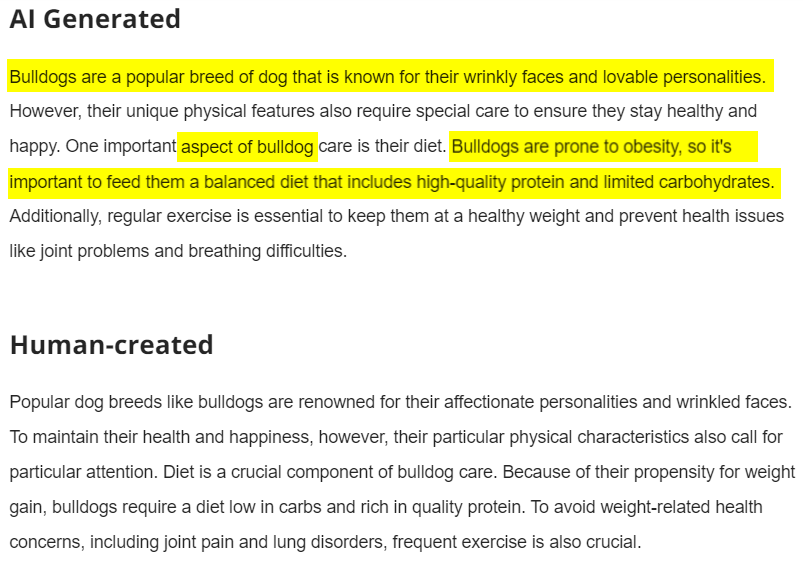
Another red flag is content that seems and reads like it was written using a template or other formulaic structure. That’s because AI-generated content typically conforms to a particular format, such as a news story or a product description.
Because it’s difficult for the AI algorithm to gauge the correct language level for the target audience precisely, it increases the likelihood of using either too simple or too advanced language when generating content. It becomes easier to tell if the text was created by a computer or a person when you master recognizing these patterns.
4. Consider the context of the content presentation
When talking about text context, we’re referring to the surrounding factors that may influence the interpretation of the content, such as the audience, purpose, and cultural background. By considering these contextual elements, we can better understand and communicate the intended message of the text.
AI-generated content may not always consider these contextual elements, leading to potential misunderstandings or inaccuracies in the message. Let’s say you’re reading an AI-generated news story, for instance. You may notice that the author didn’t consider the audience’s cultural background, resulting in unintentional biases or offensive language, which are some AI ethical issues.
Another thing to look for when trying to detect AI-generated content is definitions that don’t correspond with the context of the text. For example, if the article is about the benefits of a vegan diet”, but the definition of “vegan” provided in the text is more accurate for “vegetarian” meaning, it may be a sign that AI technology generated the content.
5. Run a plagiarism check
AI-generated material can often be the product of copying and pasting from various sources without proper attribution. This violates copyright laws and can lead to inaccuracies and inconsistencies in the content.
Plagiarism is a good indicator of AI-generated content because it lacks the creativity and originality of human writing. So, the material often includes identical or similar sentences from other publishers.
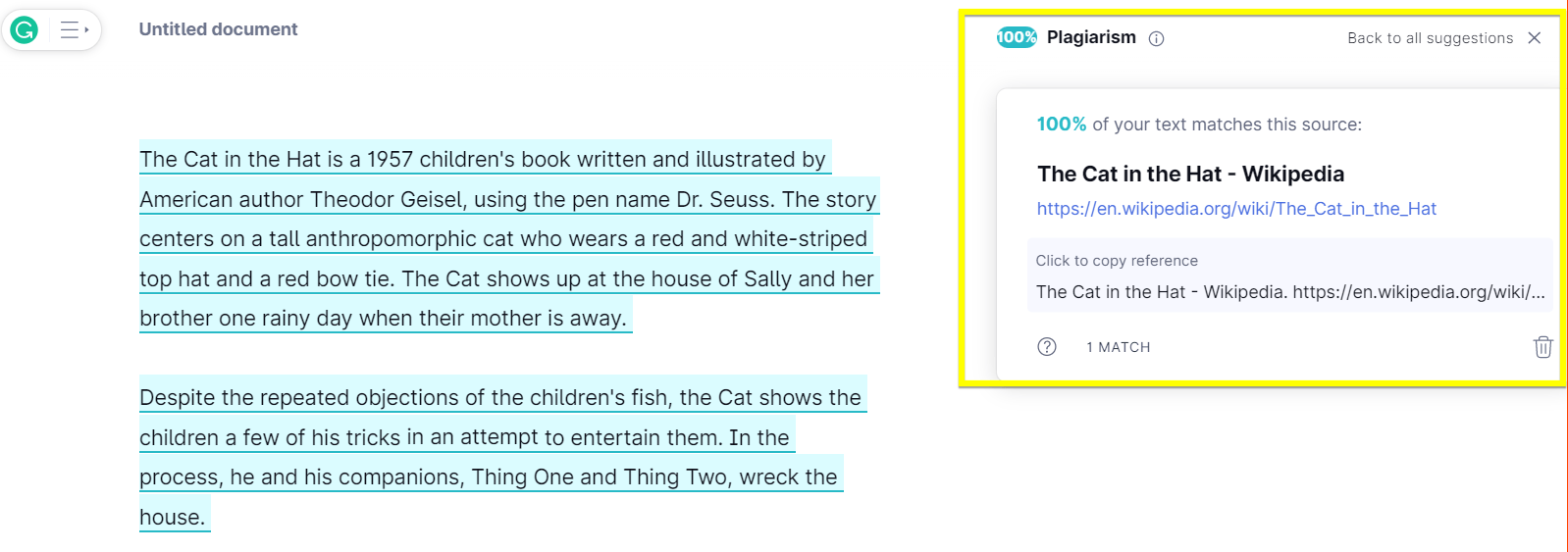
It’s crucial to run a plagiarism check on any material that seems suspiciously similar to other content online. Doing so will assist you in determining whether or not a human author or an AI program created the content.
By taking these steps to identify and avoid AI-generated content, we can ensure that the information we consume is accurate, reliable, and meaningful.
Use our proprietary keyword research tool, KeywordsFX, to help you find high-quality keywords for content and PPC campaigns.
Identify Top Keywords for Free 
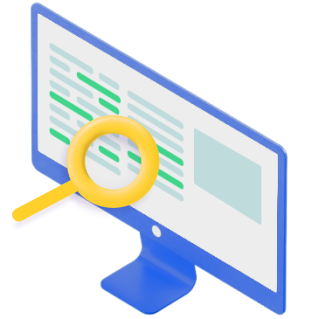
How to detect AI-generated images
Think about how often you’ve looked at an internet snapshot and questioned whether or not it was real. An unrealistically stunning picture definitely isn’t real. Here are four ways to tell if an image was created by AI:
- Analyzing image metadata
- Studying visual patterns
- Utilizing reverse-image searches
- Comparing real-world objects
1. Analyzing image metadata
Metadata analysis is one method of identifying AI-generated photographs since it provides information on the camera, software, and settings used to make the image. It may also show when and where a photo was taken, which can help verify its legitimacy. Metadata analysis can also reveal if the image has been manipulated or altered.
Metadata analysis is undeniably useful for learning the truth behind a photograph by exposing pertinent details. Even so, metadata can be changed or removed from an image, so it’s important to take further precautions when verifying its authenticity.
2. Studying visual patterns
Another way is to identify the presence of noticeable visual artifacts, such as recurring patterns of contour or texture, that are typical of machine learning methods. To do this, you can examine the image pixel by pixel and look for irregularities that would be impossible for a human to capture with a camera.
AI-generated images may, for instance, have seamless patterns or textures that are far too realistic to be coincidental. Sometimes it’s easy to recognize AI images, partly because machine learning algorithms have trouble understanding some facets of an image, such as reflections and shadows.
While this approach may require higher technical expertise, it is a powerful tool for uncovering doctored photos that have evaded other verification forms. Metadata analysis and visual pattern recognition can provide a holistic strategy for picture verification, facilitating the rapid and precise detection of doctored or deceptive images.
3. Utilizing reverse-image searches
Since AI images like those generated by Bing Image Creator might not have any exact matches online, reverse-image search engines can help identify them. You can determine if a picture is unique or has been used previously by performing a reverse-image search.
By searching for the original form of a picture, this method can assist in revealing instances in which the image has been altered. You can perform a reverse image search by simply uploading a photo or typing the link into a search engine. This method is not foolproof but has the potential to be an invaluable asset in the identification of manipulated images.
While these techniques can be helpful, you shouldn’t use them in isolation to verify images. It’s also important to use other methods, such as seeking the opinion of specialists and comparing the findings of different sources.
4. Comparing real-world objects
AI-generated images may look overly flawless or symmetrical compared to real-world objects because they lack the subtle faults and inconsistencies of natural sceneries. Examining an image’s degree of realism can provide clues as to whether or not AI generated it.
You can compare differences in lighting, shadows, and reflections to assess an image’s realism. AI images typically can’t precisely capture the subtleties of these components, which can make them appear phony.
You can verify an image’s legitimacy by scrutinizing its textures and finer features. Artificially created photos can sometimes look excessively uniform and smooth, whereas natural scenes typically have a wide range of textures and imperfections. When used in tandem with others, these strategies can significantly improve your ability to determine whether or not an image is genuine.
We’re masters of our craft.
WebFX is a marketing and design industry leader.
Meta, Amazon, and Google Partner
books read
blog posts written
industries worked in
Google Certified team members
CMS experts
AI detection tools’ top picks
Here are the three most popular AI detection tools to try out:
Content at Scale
Our top pick is Content at Scale, a robust AI content detection tool that employs machine learning algorithms to find and flag plagiarism incidents and duplicate and AI-generated content. Content at Scale’s sophisticated text analysis capabilities enables it to quickly and precisely detect similarities between various pieces of content, assisting you in ensuring that your work is unique and free of forgery.
We tested it by generating and pasting 205 words of material about a day trip to Hawaii, and the results were ambiguous. Meaning that it couldn’t tell with certainty that the content was AI-generated. However, it pointed out that AI is highly likely to have written the first sentence.
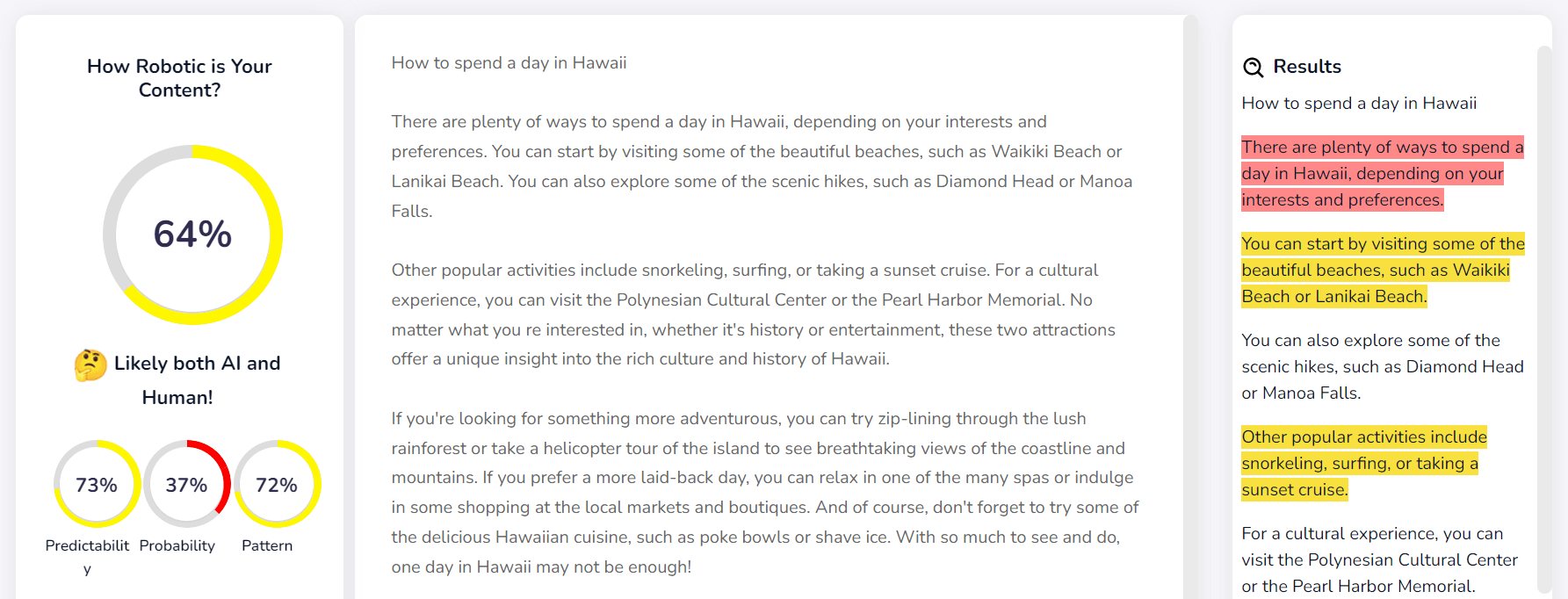
With the time and effort you save from Content at Scale’s streamlined content detection process, you’ll have more to put toward creating unique, helpful content for your audience.
2. Writer AI
Writer AI is another prominent AI content detection tool that employs machine learning techniques to examine writing patterns and detect content that an AI program may have written. This tool is especially beneficial for recognizing material written by language models such as GPT-3, which has grown in popularity recently.
When we put it to the test, it only detected 4% of the piece written by a human. Meaning that it detected 96% of the content to be AI, which is quite impressive given that we didn’t edit our AI-generated Hawaii day trip piece.
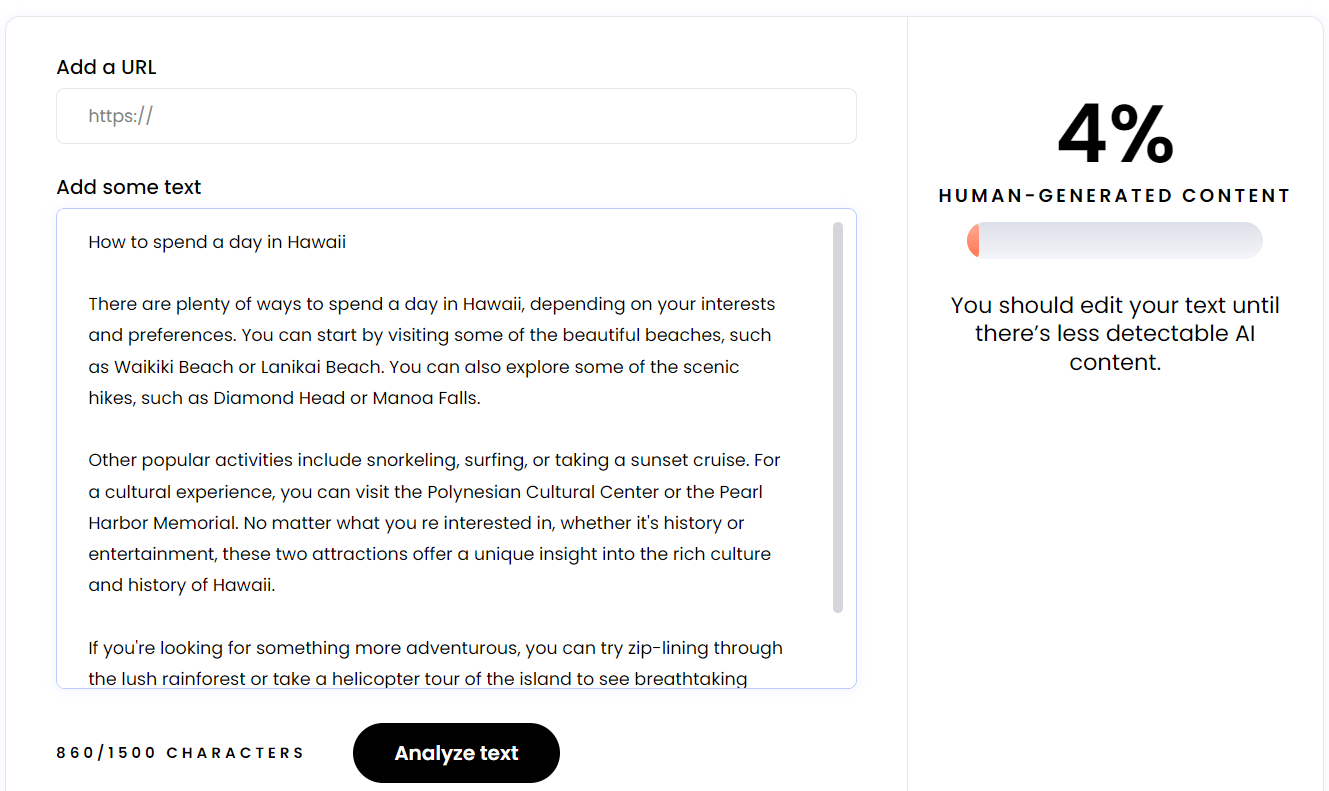
Its sophisticated algorithms can recognize regularities in the text’s syntax and vocabulary, which allows it to tell the difference between human-written and AI-generated writing.
3. ZeroGPT
ZeroGPT does not rely on machine learning methods but rather uses a language model known as GPT-2 to produce novel, human-like text and then compares it to the content under analysis. By taking this tack, ZeroGPT can identify work produced by a broader class of AI programs and even identify work that a human has heavily edited to appear more natural.
We have a winner! ZeroGPT caught us red-handed while attempting to pass off entirely AI-generated content as human-created. This precision in identifying AI-generated material is essential when such content is on the rise and it is getting more difficult to tell the difference between human-written and AI-generated information.
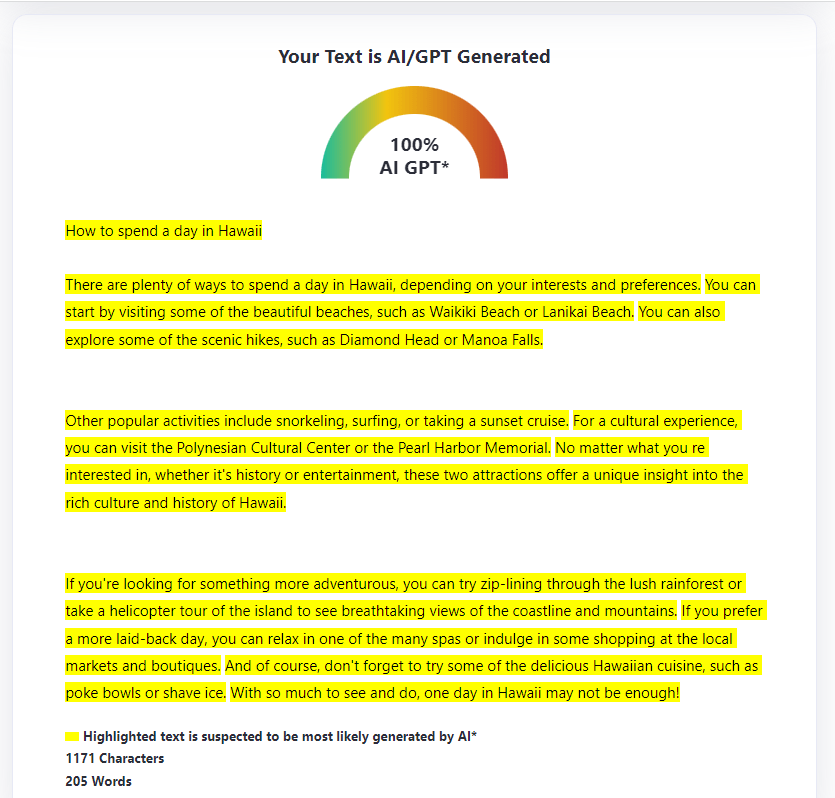
In addition, ZeroGPT has a straightforward interface that makes it simple to upload and analyze content. It’s a go-to if you need to swiftly and reliably assess the integrity of published materials online.
93% of WebFX customers are extremely satisfied with their digital marketing results.
“Working with WebFX, everything is very organized and strategic. We’re only a year into our partnership, and our expectations have definitely been met.”
View More Client Testimonials
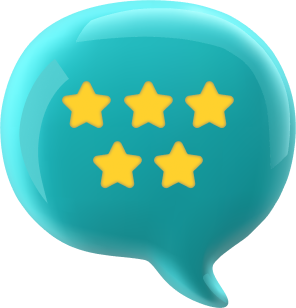
Improve your rankings with human-created content
At WebFX, we employ professional content creators dedicated to providing you with top-notch, human-created content that will boost your search engine rankings and protect your business from the pitfalls of AI-generated writing.
We’ll load your website and social media profiles with engaging, helpful information to encourage repeat visits. The SEO-friendliness of our content also means that your website will rise in the SERPs and see an increase in organic visitors.
So why wait?
Contact us online or call 888-601-5359 to learn more about how our content marketing services can help take your website to the next level.
-
 Sina is a marketing expert who specializes in SEO, AI, and digital marketing content. With over five years of experience, she’s written hundreds of pieces, spanning a variety of topics and industry niches. She loves combining her strong eye for detail and passion for storytelling in her work. You’ll find her fruit picking or horse riding at the local farm when she’s not writing.
Sina is a marketing expert who specializes in SEO, AI, and digital marketing content. With over five years of experience, she’s written hundreds of pieces, spanning a variety of topics and industry niches. She loves combining her strong eye for detail and passion for storytelling in her work. You’ll find her fruit picking or horse riding at the local farm when she’s not writing. -

WebFX is a full-service marketing agency with 1,100+ client reviews and a 4.9-star rating on Clutch! Find out how our expert team and revenue-accelerating tech can drive results for you! Learn more
Try our free Marketing Calculator
Craft a tailored online marketing strategy! Utilize our free Internet marketing calculator for a custom plan based on your location, reach, timeframe, and budget.
Plan Your Marketing Budget
Table of Contents
- What is AI Detection?
- AI vs. Human
- How to Detect AI Content [written Text]
- 1. Examine if the Language and Tone of the Content Feel Robotic
- 2. Check the Content for Repetitive Phrases or Cliches
- 3. Look for Patterns in the Writing Style or Word Choice
- 4. Consider the Context of the Content Presentation
- 5. Run a Plagiarism Check
- How to Detect AI-generated Images
- 1. Analyzing Image Metadata
- 2. Studying Visual Patterns
- 3. Utilizing Reverse-image Searches
- 4. Comparing Real-world Objects
- AI Detection Tools’ Top Picks
- Content at Scale
- 2. Writer AI
- 3. ZeroGPT
- Improve Your Rankings with Human-created Content

Looking for More?
Get expert ideas, industry updates, case studies, and more straight to your inbox to help you level up and get ahead.
"*" indicates required fields
Try our free Marketing Calculator
Craft a tailored online marketing strategy! Utilize our free Internet marketing calculator for a custom plan based on your location, reach, timeframe, and budget.
Plan Your Marketing Budget

